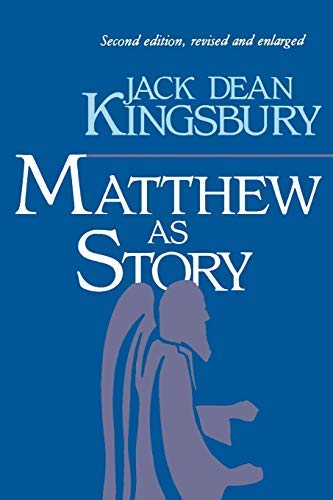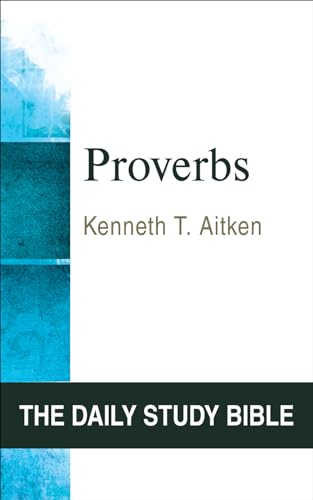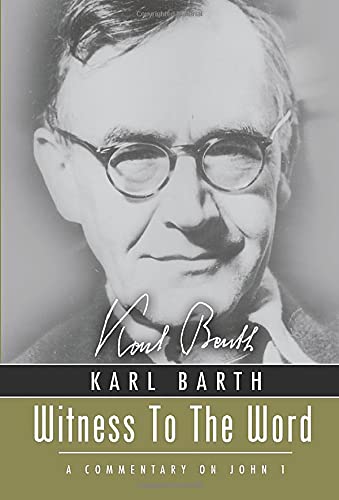J. D. Kingsbury, a prominent Matthean scholar of a moderate critical position, has revised and enlarged his Proclamation Commentary on Matthew (PC) and has written another introductory book on Matthew from a literary-critical point of view (Story). Both books were written in order to initiate beginners into Matthean studies.
The author himself summarizes the revised edition of PC as follows: ‘Chapter 1 presents a brief overview of the history of Matthean research in this century and explains how redaction, or composition, criticism is both similar to and different from other interpretive (sic) methods. It also sketches the particularities of the approach to Matthew taken here. Chapter 2 deals with Matthew’s portrait of Jesus by discussing both his person and his mission. Next, because what is unique about Jesus in Matthean perspective is that in him God draws near to humankind with his end-time rule, chapter 3 explores Matthew’s understanding of God’s rule, or kingdom. And finally, because the Matthean Jesus is also one who calls disciples and founds the church, chapter 4 concerns itself with Matthew’s understanding of the community of the disciples.’ The author claims that he has employed the form of redaction criticism, often called composition criticism, by which one attempts to ascertain what is Matthean by examining the Gospel as a whole without distinguishing between tradition and redaction.
Story is ‘a study in literary, or narrative, criticism.… The object is to explore the world of Matthew’s thought with an eye to the flow [plot] of the gospel-story that is being told. Chapter 1 explains the method that informs the other chapters. It likewise contains a great deal of material that is meant to supplement and enrich the further discussion. Chapters 2–4 trace the story-line of Matthew as it pertains to Jesus, and chapter 6 does the same with reference to the disciples. Chapter 5 focuses on the use in Matthew of the title ‘the Son of man’. Chapter 7 takes the reader outside the world of Matthew’s story and deals with the community for which the first evangelist wrote. Chapter 8 rounds out the book with concluding remarks.’
In spite of his claim that ‘this book is fundamentally different in character’ from the PC, these two books are, in fact, the same in substance. Certainly ch. 1 of Story, which is probably its most useful chapter, cannot be found in the PC, but apart from this chapter and the technical terms peculiar to literary criticism, almost everything which appears in Story is either repetition or expansion of the PC on Matthew. Chs. 2–4 are basically an expansion of two sections of ch. 2 of the PC, supplemented with materials which appear in different places of the PC, Ch. 5 is an enlarged version of the section on the Son of man in the PC. Chs. 6–7 are virtually the same as ch. 4 of the PC. They seem to overlap even to the extent of confusing the reader. That the author cannot find anything new by employing a new method may invalidate the method as such, but the failure is probably due to the author’s application and understanding of the method. In this respect, it is definitely worth comparing Story with Matthew’s Story of Jesus (Fortress Press, 1985) by R. A. Edwards, which is overlooked in Kingsbury’s bibliography. A basic difference between the two books is their understanding and emphasis of the structure of Matthew. Edwards, in addition to his different scheme of Matthew’s Gospel, emphasizes the point of view of a reader who begins at the beginning without knowledge of a whole scheme of the Gospel, whereas Kingsbury emphasizes the scheme of the Gospel which appears in the PC.
The present reviewer would like to question the validity of both literary and composition criticism used by themselves because both approaches tend to ignore the historical background. Can we interpret historical documents without paying proper attention to their historical context as well as their literary context? For instance, Kingsbury argues in the PC that the first evangelist did not explain the phrase ‘the kingdom of heaven’ because its meaning is sufficiently clear in his own writing. But there is a good case for arguing that the phrase was familiar in the first century and that Matthew presupposes that familiarity among his readers. Although the present reviewer does not disagree with Kingsbury that the gospels must be seen as unified documents, we also need to know their historical context in order to understand them fully. Another example is Kingsbury’s disregard of any biblical background in his discussion of the Son of man and his almost exclusive concentration on the Matthean texts. Although he admits that the Danielic Son-of-man lies behind at least one passage (PC p. 97, Story p. 123), he does not make use of this biblical background in his exposition. In a word, the present reviewer would like to question the validity of applying a method used in the study of modern literature, particularly of fiction, without considering the differences in literary genre. In addition, Kingsbury dates Matthew in ad 85–90 and denies the authorship of Matthew the apostle, but the reviewer would like to challenge his view in spite of the scholarly consensus (cf. J. A. T. Robinson’s Redating the NT and The Priority of John, also R. H. Gundry’s and D. A. Carson’s commentaries on Matthew).
In conclusion, Kingsbury’s revised edition of PC on Matthew is a valuable introduction to the Matthean studies, but there are major questions about Story regarding both Kingsbury’s application of literary criticism and the validity of his method.
Akio Ito
Wycliffe Hall, Oxford







